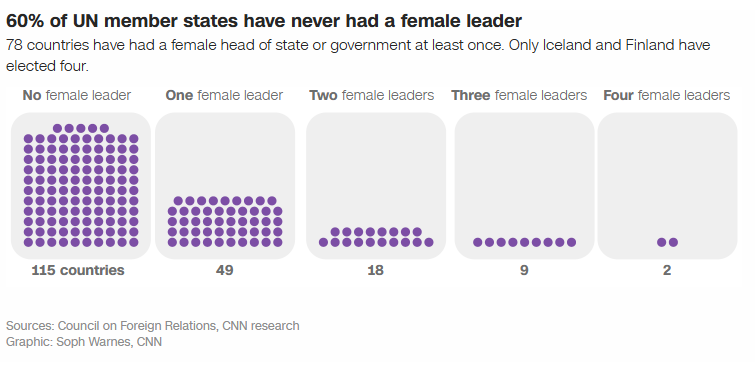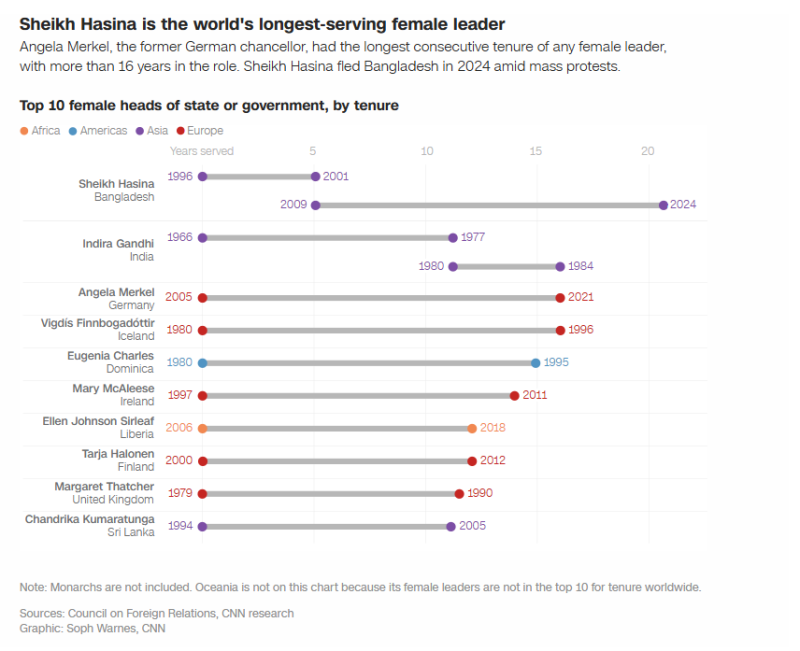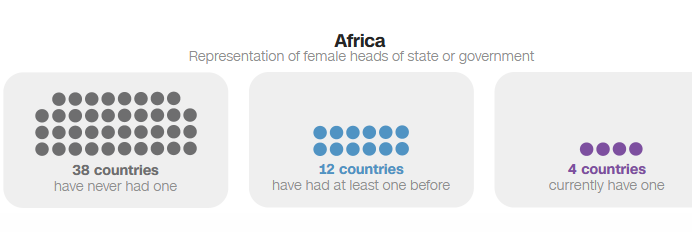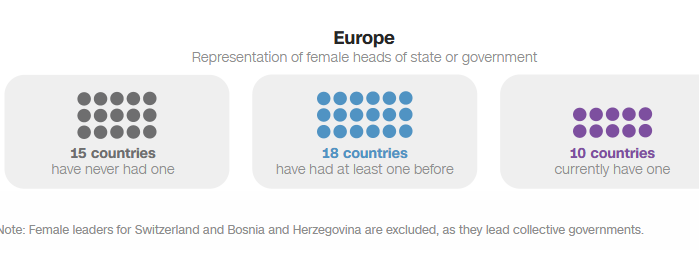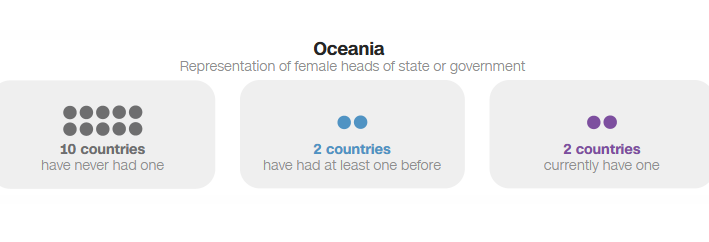The US had a chance to elect its first female president, voters who hoped to “see the glass ceiling break” ultimately saw a defeat
This year, 45 countries at the United Nations held national elections to decide their top leadership. Of those, only four chose a woman to become head of state or government, according to CNN’s analysis of data from the International Foundation for Electoral Systems.
While the US had the chance to elect its first female president, voters hoping to “see the glass ceiling break” ultimately saw a defeat for the second time in eight years. Three of the countries that elected a female leader in 2024 – North Macedonia, Namibia and Mexico – did so for the first time in their country’s history.
In the period after World War IIthe first woman elected to lead a UN country 64 years ago. Here’s a look at where and when women have secured national leadership positions since then.
As soon as last two decades many more countries saw their first female leaders, according to CNN’s analysis of the Council on Foreign Relations’ Women Power Index, which includes UN member states and excludes monarchs, monarch-appointed leaders and presidents in coalition governments.
Forty-nine UN member states had a female leader over the past seven decades. Others 18 countries had two womenof leaders, nine countries had three female leaders and only two countries – Finland and Iceland – had four different female leaders. However, a woman has never served as head of state or government in 115 UN member countries.
The first continent with a UN member state to have a female leader since World War II was Asia. In 1960, Sri Lanka – then known as Ceylon – elected its first female prime minister, Sirimavo Bandaranaike. She entered politics after her husband was assassinated while serving as prime minister.
Since then, women have led 13 other countries in Asia. Many of them entered politics through their husbands or fathers in former colonial countries.
“Many of the first women to come to power were those with dynastic connections to power, and in places where the dynastic connection was very closely tied to the struggle for independencesaid Minna Cowper-Coles, a researcher at the Global Women’s Institute. Leadership at King’s College London.
Asia also leads the way in terms of women serving in power, with Sheikh Hasina holding the record for the longest number of years served by a woman as a national leader.
Hasina was Prime Minister of Bangladesh from 1996 to 2001 and again from 2009 until her resignation in August 2024 following mass anti-government protests.
Her father, an independence leader, was the first prime minister of Bangladesh.
Isabel Perón was the first female head of state in the Americas. Her husband, Juan Peron, was president of Argentina and died in office in 1974. As vice president, she assumed many of his duties when he became ill and was sworn in as president after his death.
In October, Claudia Sheinbaum became the first female president of Mexico.
The first woman to become the leader of an African country was Elisabeth Domitien, who was appointed prime minister of the Central African Republic in 1975.
The first elected female head of state in Africa was Ellen Johnson Sirleaf, who became president of Liberia in 2006.
In 2021, Tunisia became the first Arab country to be ruled by a woman when Najla Bouden was appointed prime minister by the country’s president.
Margaret Thatcher became Europe’s first female prime minister in 1979. A few months later, Maria de Lourdes Pintasilgo of Portugal became the continent’s second female head of government.
As of 2010, 28 countries in Europe had at least one female leader, and the region now has the highest percentage of countries that have had a female leader. About two-thirds, or 65%, of the 43 UN member states in the region have a female leader, and just under a quarter of them are currently led by a woman.
European female leaders have also achieved significant tenure, with five leaders in the top ten longest-serving leaders, all with more than 10 years in office. Angela Merkel, who first became chancellor of Germany in 2005, held the role for 16 years.
Jenny Shipley was the first female Prime Minister of New Zealand, serving from 1997 to 1999. Julia Gillard was the first woman to hold the title of Prime Minister of Australia, serving from 2010 to 2013.
Experts say it’s important for women to play key roles in government because it broadens representation.
“We know there is some kind of power in seeing people like you represented. This mattersFarida Jalalzai, associate dean for global initiatives and engagement and professor of political science at Virginia Tech, said in an interview with CNN ahead of the US election. “You see more examples of different people in these roles, whether they’re candidates, whether they’re presidents, whether they’re prime ministers, and it breaks down the perceptions of what we think these leaders should look like.».
One possible positive outcome of women winning elections around the world is that their success can inspire others to take on leadership roles, encouraging younger generations of women into politics.
“We can talk about the power of recruitingJalalzai said. “If a woman wins, maybe then we’ve learned the lesson that a woman can win… so you end up with more women willing to throw their hats in the ring».
Source :Skai
With a wealth of experience honed over 4+ years in journalism, I bring a seasoned voice to the world of news. Currently, I work as a freelance writer and editor, always seeking new opportunities to tell compelling stories in the field of world news.


